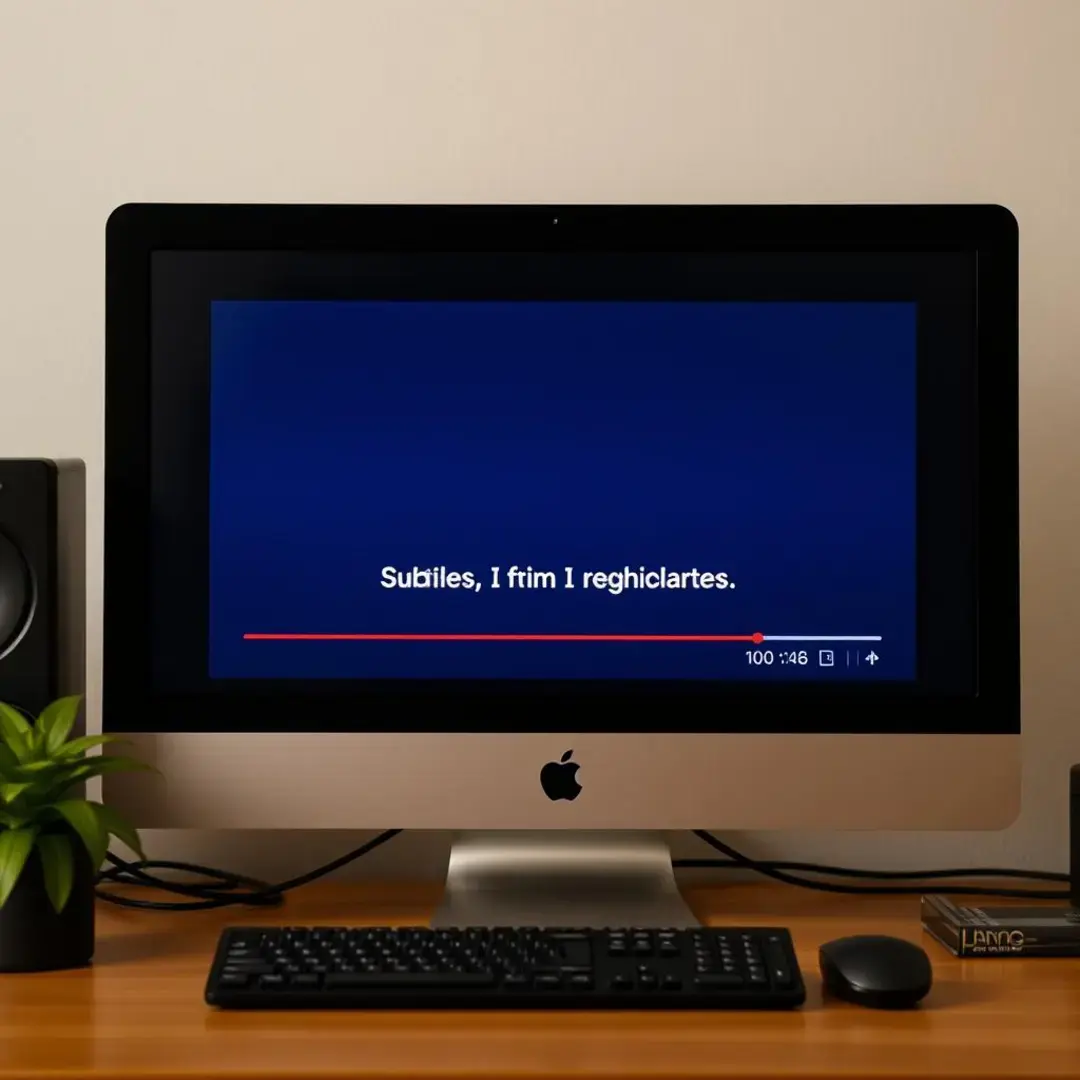Video Subtitle Generation
Introduction

Overview of video subtitle generation in real-time translation tools
Video subtitle generation has revolutionized the way we consume video content today, especially through real-time translation tools. As globalization increases, the demand for multilingual video content continues to rise, making subtitles an essential component in bridging language barriers. These subtitles not only enhance comprehension but also provide a way for viewers to engage with content from diverse cultures. With the advent of artificial intelligence, generating accurate and timely subtitles has become faster and more efficient than ever before.
Key Trends in Video Subtitle Generation

Emerging trends
One of the most significant trends in video subtitle generation is the integration of AI technologies that enhance the accuracy and speed of the transcription process. Advanced machine learning algorithms can now analyze audio tracks, recognize speech patterns, and automatically generate subtitles in real-time. These AI-powered tools allow content creators to produce videos more efficiently, freeing up valuable time for more creative pursuits.
As audiences around the world grow more interconnected, there is a burgeoning demand for multilingual subtitle support. Many translation tools now offer robust options for translating subtitles into multiple languages simultaneously. This trend not only helps creators reach a wider audience but also enhances the viewing experience for non-native speakers, making videos universally accessible.
The integration of subtitle generation tools with other platforms is breaking new ground for content creators. Many video editing software and distribution platforms are embedding real-time subtitle generation capabilities directly into their functionalities. This integration creates a seamless workflow, allowing creators to edit, add subtitles, and distribute their content in one go, thus streamlining the production process.
Industry impact
The impact of video subtitle generation on content creation cannot be understated. By simplifying language barriers, content creators are empowered to share their stories and ideas with the world more effectively. Video creators can now focus on high-quality production and storytelling, knowing that modern technologies have their back when it comes to making content digestible across cultures.
Video subtitles play a crucial role in making content accessible, particularly for individuals with hearing impairments. By implementing effective subtitle generation techniques, videos can now cater to a wider range of viewers, promoting inclusivity and equal access to information. This enhancement in accessibility not only complies with regulatory requirements but also establishes brands as socially responsible.
With video subtitle generation, content creators can more effectively penetrate international markets. The ability to convert videos into multiple languages can significantly boost viewership and open up new revenue streams. A localized approach to content not only improves viewer engagement but also strengthens brand loyalty as audiences are more likely to connect with content that speaks to them.
Challenges and limitations
Despite significant advancements, accuracy remains a primary challenge in automated subtitle generation. Even the best algorithms can misinterpret nuanced speech, regional accents, or industry-specific jargon, leading to the potential for misunderstandings. The need for human oversight is often necessary to ensure that generated subtitles accurately reflect the spoken content.
Proper contextual understanding can remain difficult for AI systems. Human languages are filled with idioms, cultural references, and contextual cues that machines may not fully grasp. This lack of contextual awareness can lead to translations that miss the essence or intent behind the spoken word, thereby limiting the quality of viewer experience.
Technical limitations, such as connectivity issues and software reliability, can also hamper the efficiency of subtitle generation tools. In environments where bandwidth is limited, real-time processing may suffer, causing delays and impacting the overall viewing experience. Developers must continuously address these challenges to ensure that technology keeps pace with user needs.
Future Outlook

Future developments
The future of video subtitle generation holds the promise of enhanced accuracy and speed, thanks to ongoing advancements in AI and natural language processing. As algorithms improve, we can expect to see a more reliable transcription process that reduces the need for manual editing. This development will further push video content to new heights, allowing for even faster release times without compromising quality.
As the technology for real-time translation advances, we may see a future where subtitles can be produced in multiple languages simultaneously and instantaneously. This capability could revolutionize live television broadcasts, online events, and social media streaming, making them accessible to an even broader audience in real time. This exciting prospect opens up new opportunities for global engagement.
Looking ahead, personalized subtitle experiences tailored to individual viewer preferences could become a reality. Viewers may be able to customize their subtitle settings, such as font size, color, and language, based on their needs. This flexibility will not only enhance viewer satisfaction but will also make content more engaging and enjoyable for diverse audiences.
Market predictions
The subtitle generation market is poised for exponential growth as more businesses recognize the importance of subtitle accessibility. The increasing volume of video content produced daily translates to a greater demand for effective and efficient subtitle solutions. This growth will attract both investment and innovation, benefiting the industry as a whole.
As global consumption of multimedia content rises, the demand for multilingual subtitles will only increase. This trend suggests that companies will prioritize the development of new technologies that support a wide range of languages and dialects. Anticipating this increasing need can help businesses remain competitive in an evolving marketplace.
Lastly, the integration of subtitle generation tools with cutting-edge technologies such as virtual reality (VR) and augmented reality (AR) could take viewer engagement to an entirely new dimension. The possibilities for enhancing immersive experiences with real-time subtitles are substantial and will likely be a key focus for developers in the coming years.
Potential impact on users
For users, the implications of enhanced video subtitle generation are profound. Improved accessibility ensures that everyone, regardless of their linguistic or hearing abilities, can enjoy video content without barriers. This shift not only increases audience size but also fosters a more inclusive society where information is available to all.
Furthermore, subtitles enrich the viewing experience by allowing audiences to follow along with dialogue without distractions. The availability of accurate and timely subtitles enhances comprehension while retaining the emotional context of spoken words. As a result, viewers are more likely to invest their time and attention, ultimately contributing to increased engagement with content.
As video content becomes more accessible through effective subtitle generation, cross-cultural communication will see significant improvements. Audiences will benefit from the ability to explore international perspectives, enhancing cultural understanding and empathy. In this interconnected world, fostering dialogue across cultures is crucial for building a more harmonious society.
How to Choose the Right App

Step-by-step guide
The first step in choosing the right app is identifying your specific needs. Are you looking for real-time subtitles, multilingual capabilities, or other features? Understanding your requirements will help you narrow down your options effectively.
Once you have a clear understanding of your needs, conduct thorough research on available apps. Read reviews, compare features, and explore user testimonials to get an overview of what each app has to offer. This research phase is critical for making well-informed decisions.
After compiling a list of potential apps, compare their features side by side. Take a close look at what each app offers and how it aligns with your requirements. Don’t forget to factor in pricing, as finding an app that fits within your budget is essential.
Testing apps with your own content is a vital step in the selection process. Many apps offer free trials or demos that allow you to assess their performance accurately. This hands-on approach will provide valuable insights into how well the app meets your expectations.
Finally, based on your research and testing, make a decision that aligns with your needs and budget. Consider not only the app’s current capabilities but also its potential for future updates and improvements. Making an informed choice will set you up for success in your video projects.
Conclusion
In conclusion, video subtitle generation stands at the intersection of technology and communication, playing a crucial role in today’s diverse and interconnected world. With developments in AI and real-time translation, the future looks promising for both content creators and viewers. Understanding the emerging trends, potential challenges, and future predictions in this field will empower you to make informed decisions about the tools and applications you utilize. As we navigate this exciting landscape, embracing the significance of video subtitles means embracing the future of global communication and inclusivity.
Factors to consider
When considering which video subtitle generation app to use, accuracy and speed should be your primary focus. An app that accurately captures and translates spoken language in real-time will significantly enhance the quality of your content. Look for user reviews and product specifications to gauge performance before making your choice.
The range of language support offered by an app is another important factor. The better the app is at catering to your target audience’s languages, the more effective your subtitles will be. Ensure that the selected app can handle the specific languages and dialects you intend to use.
For many content creators, integrating new tools with existing workflows is crucial for maintaining efficiency. Check whether the subtitle generation app works well with the video editing software or platforms you already use. A seamless integration will facilitate your workflow and save time.
Lastly, examine the cost structure and pricing plans of various subtitle generation apps. Some tools may offer free versions with limited features, while others may require subscriptions for access to advanced functionalities. Assess your budget and select an app that provides a good balance between features and cost.





